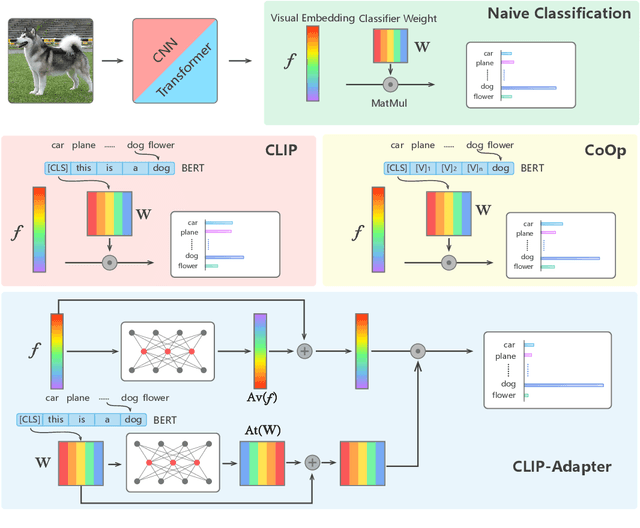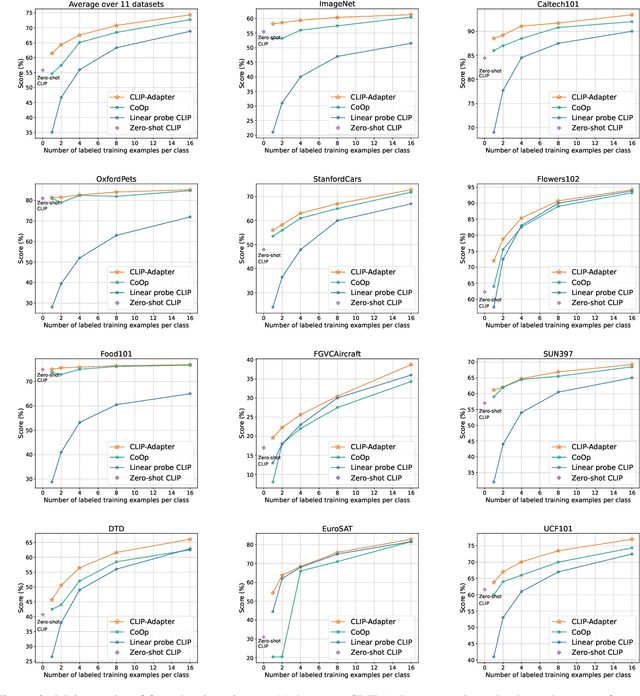CLIP-Adapter: Better Vision-Language Models with Feature Adapters
Paper and Code
Oct 09, 2021



Large-scale contrastive vision-language pre-training has shown significant progress in visual representation learning. Unlike traditional visual systems trained by a fixed set of discrete labels, a new paradigm was introduced in \cite{radford2021learning} to directly learn to align images with raw texts in an open-vocabulary setting. On downstream tasks, a carefully chosen text prompt is employed to make zero-shot predictions.~To avoid non-trivial prompt engineering, context optimization \cite{zhou2021coop} has been proposed to learn continuous vectors as task-specific prompts with few-shot training examples.~In this paper, we show that there is an alternative path to achieve better vision-language models other than prompt tuning.~While prompt tuning is for the textual inputs, we propose CLIP-Adapter to conduct fine-tuning with feature adapters on either visual or language branch. Specifically, CLIP-Adapter adopts an additional bottleneck layer to learn new features and performs residual-style feature blending with the original pre-trained features.~As a consequence, CLIP-Adapter is able to outperform context optimization while maintains a simple design. Experiments and extensive ablation studies on various visual classification tasks demonstrate the effectiveness of our approach.
 Add to Chrome
Add to Chrome Add to Firefox
Add to Firefox Add to Edge
Add to Edge